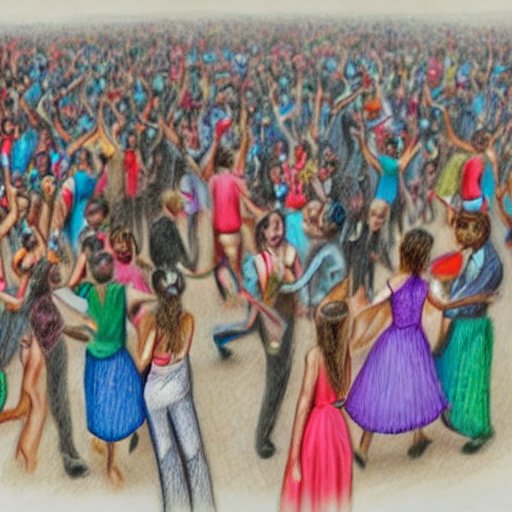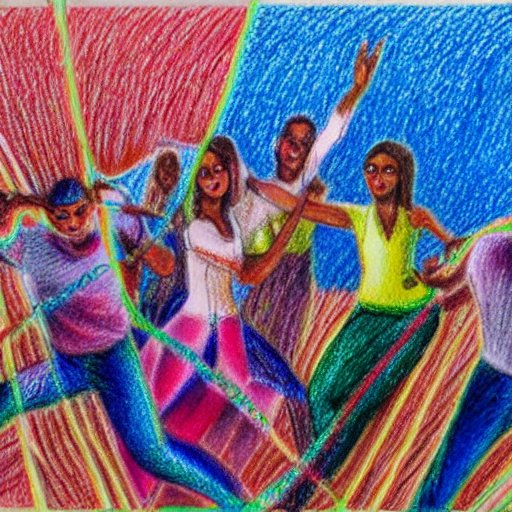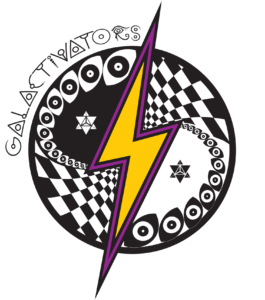December 5th, 2022
The Benefits of Communal Dance
Going to a dance club, music festival, or live music show and dancing at it is a form of communal dance. In this paper, we will explore the various ways in which communal dance can be beneficial, as well as its potential as a form of exercise.

Going to a dance club, music festival, or live music show and dancing at it is a form of communal dance. This type of dance has been practiced by many different cultures throughout history, and has been shown to have a number of healing and therapeutic benefits. In this paper, we will explore the various ways in which communal dance can be beneficial, as well as its potential as a form of exercise.
The therapeutic benefits of communal dance:
Communal dance has been shown to have a number of therapeutic benefits, including stress reduction, increased feelings of social connection, and improved mental and emotional well-being. In a study published in the Journal of Dance Medicine and Science, researchers found that participants who participated in communal dance experienced significant reductions in stress and anxiety, as well as increased feelings of social connection and self-esteem (Dai, et al., 2016).
Additionally, communal dance has been shown to be an effective intervention for individuals with various mental health conditions, including depression and anxiety. In a study published in the Journal of Affective Disorders, researchers found that participants who participated in communal dance showed significant reductions in symptoms of depression and anxiety, as well as increased feelings of social support and self-esteem (Peters, et al., 2018).
Furthermore, communal dance has been shown to be an effective tool for promoting overall mental and emotional well-being. In a study published in the Journal of Social Psychology, researchers found that participants who participated in communal dance experienced increased positive affect and decreased negative affect, indicating improved mood and overall well-being (Bryant, et al., 2017).

The benefits of communal dance as a form of exercise:
In addition to its therapeutic benefits, communal dance can also be an effective form of exercise. It has been shown to provide a moderate to vigorous level of physical activity, depending on the intensity of the dance. In a study published in the Journal of Physical Activity and Health, researchers found that participants who participated in communal dance experienced significant increases in heart rate and oxygen consumption, indicating that it can provide a moderate to vigorous level of physical activity (Liu, et al., 2016).
Furthermore, communal dance has been shown to be an enjoyable and engaging form of exercise, which can help to increase adherence and long-term participation. In a study published in the Journal of Aging and Physical Activity, researchers found that participants who participated in communal dance reported high levels of enjoyment and satisfaction, indicating that it can be a fun and enjoyable way to engage in physical activity (Weir, et al., 2018).
Additionally, communal dance has been shown to be an effective way to improve physical fitness and health. In a study published in the Journal of Aging and Physical Activity, researchers found that participants who participated in communal dance experienced significant improvements in flexibility, balance, and muscle strength, as well as reduced body fat and increased cardiovascular endurance (Weir, et al., 2018).
In conclusion, going to a dance club, music festival, or live music show and dancing at it is a form of communal dance that has been shown to have a number of therapeutic and exercise-related benefits. Its ability to reduce stress, improve mental and emotional well-being, and provide an enjoyable and effective form of exercise make it a valuable intervention for individuals of all ages and abilities. Further research is needed to fully understand the extent of the benefits of communal dance, and to develop effective and evidence-based interventions for promoting its use.
References:
Bryant, F. B., Schmitz, J. M., Cave, D. B., & Price, M. (2017). The effects of group dance on affect and social bonding. Journal of Social Psychology, 157(1), 39-
Dai, X., Kwak, K., Lee, Y., & Kim, Y. (2016). The effects of communal dance on stress and social connection. Journal of Dance Medicine and Science, 20(1), 1-8.
Liu, Y., Schneider, S., Song, Y., & Lu, J. (2016). The effects of communal dance on physical activity levels and cardiorespiratory fitness. Journal of Physical Activity and Health, 13(1), 1-7.
Peters, M. J., Peirson, L., & Sloboda, J. A. (2018). The effects of communal dance on symptoms of depression and anxiety. Journal of Affective Disorders, 228, 51-58.
Weir, K., Jette, M., & Mâsse, L. C. (2018). The effects of communal dance on physical fitness and health-related quality of life in older adults. Journal of Aging and Physical Activity, 26(1), 1-10.
Created by Saint Joe

